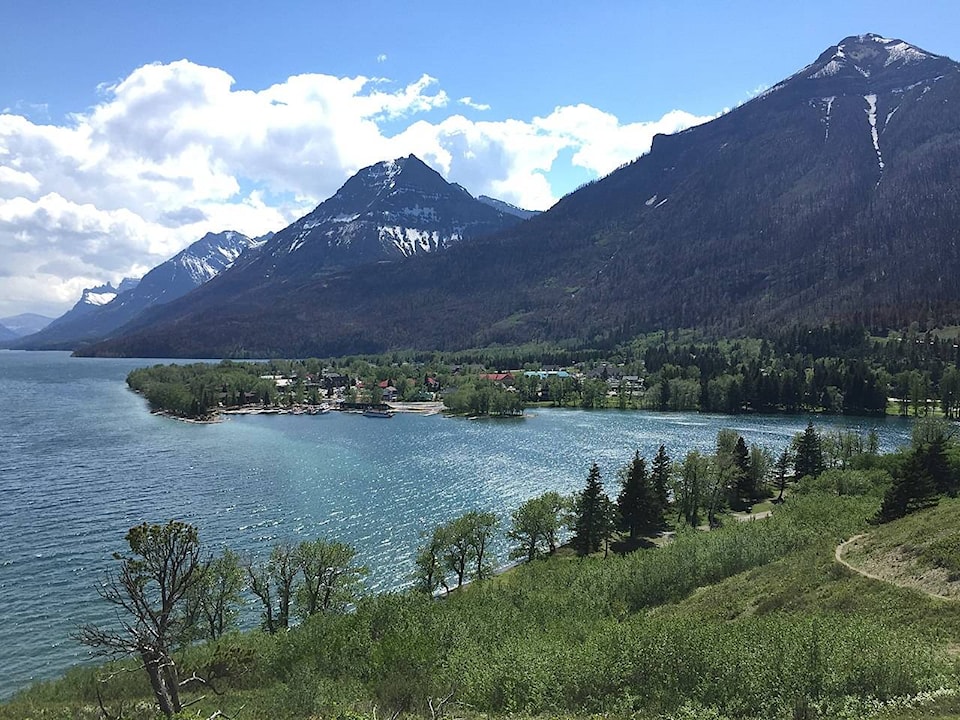I am always amazed at the beauty of Alberta, specifically Waterton Lake National Park, with breathtaking views, nestled in the Rocky Mountains.
At the same time, I am stunned by the natural splendor of Glacier National Park in Montana, with more of the same snow-capped Rocky Mountains.
The only difference is one is situated in Canada and the other is in the United States.
Rotary International provided the impetus to make the dream of a Waterton-Glacier International Peace Park a reality. It exists to celebrate peace and friendship between Canada and the United States, which boasts the largest undefended border.
Sounds kind of cosy and full of brotherly love, doesn’t it?
So why in the world do we need a passport to cross the 49th parallel?
This question was posited by a veteran colonel who oversees the Montana Military Museum in Helena.
I crossed the U.S. border, passport in hand, to finally visit the museum which houses the history of the First Special Service Force, the precursor to today’s Green Berets and Special Forces.
It was in 1942, when my father, Roy N. Cuff, crossed the U.S. border, sans passport, to enlist in this unique commando outfit in the Second World War.
This was considered a unique international undertaking at the time. The force was composed of approximately 3,000 Canadians and 3,000 Americans distributed equally throughout its ranks, carrying the flags of both nations.
They were neither Canadian nor American. U.S. Gen. Dwight Eisenhower called them “liberators.”
They arrived separately at Fort William Henry Harrison in the summer of 1942 and changed history, as it was the only time two countries had formed their own special unit.
According to the DVD, Daring to Die: The Story of the Black Devils, the First Special Service Force was highly trained in mountain warfare, parachuting, hand-to-hand combat, stealth and night fighting.
Their morale remained high under the leadership of Gen. Robert Frederick.
A small unit, they were constantly pitted against much larger forces with odds that would overwhelm other units.
One of their most celebrated victories was the taking of Monte La Difensa in Italy. This was a heavily defended mountaintop which held up the Allied advance for weeks. The Germans remained confident in their ability to maintain their foothold here as they knew no one could possibly climb the backside of this daunting mountain, especially in the dead of winter.
They were wrong.
The First Special Service Force took Mount La Difensa in a single night, but it was in Anzio where their repeated nighttime raids deep into enemy territory earned them the nickname The Black Devils.
The Devil’s Brigade as they were now known, was disbanded after only two-and-a-half years. Of the original 6,000 men, only 2,300 survived.
My dad left the force as a first lieutenant, but was promoted to major.
He settled in Calgary, then Vancouver.
In 1959, he hosted the FSSF reunion at our homestead in the country outside of Calgary.
I remember having breakfast at the Palliser Hotel with Gen. Frederick. My mother was aghast, as I had no clean socks to wear with my pretty pink dress.
I remember when my dad was guest of honour at the screening of the movie, The Devil’s Brigade, starring William Holden.
My dad, who would have been 100 today, would no doubt scratch his head about my needing a passport to drive to Montana.
It was worth it, though, as I experienced what the force represented; an example of international brotherhood and unity.
And I saw some beautiful scenery on the way, on both sides of the border.
April Lewis is the local communications director for CARP, a national group committed to a ‘New Vision of Aging for Canada.’ She writes monthly.
